Best Artificial Intelligence Tools for Image and Video Generation
The emergence of new AI tools is transforming the world of graphic design. Artificial intelligence design tools are giving designers new ways to do anything in their artistic process. Users can create entirely new images or videos by simply typing keywords or phrases into a prompt. Designers can come up with completely new images by entering palette, materials, textures and any other description.
These tools have freed up graphic designers from repetitive manual tasks, and allow them to hone in on big picture, or concept thinking. More than ever before, design is democratized so that anyone with internet access and a device can experiment with creating impressive original art or captivating imaginative videos.
While these tools are no substitute for human originality, they expand designers’ abilities in exciting ways. The best of AI design in the future will pair human creativity with AI capabilities to achieve unique and incredible things.
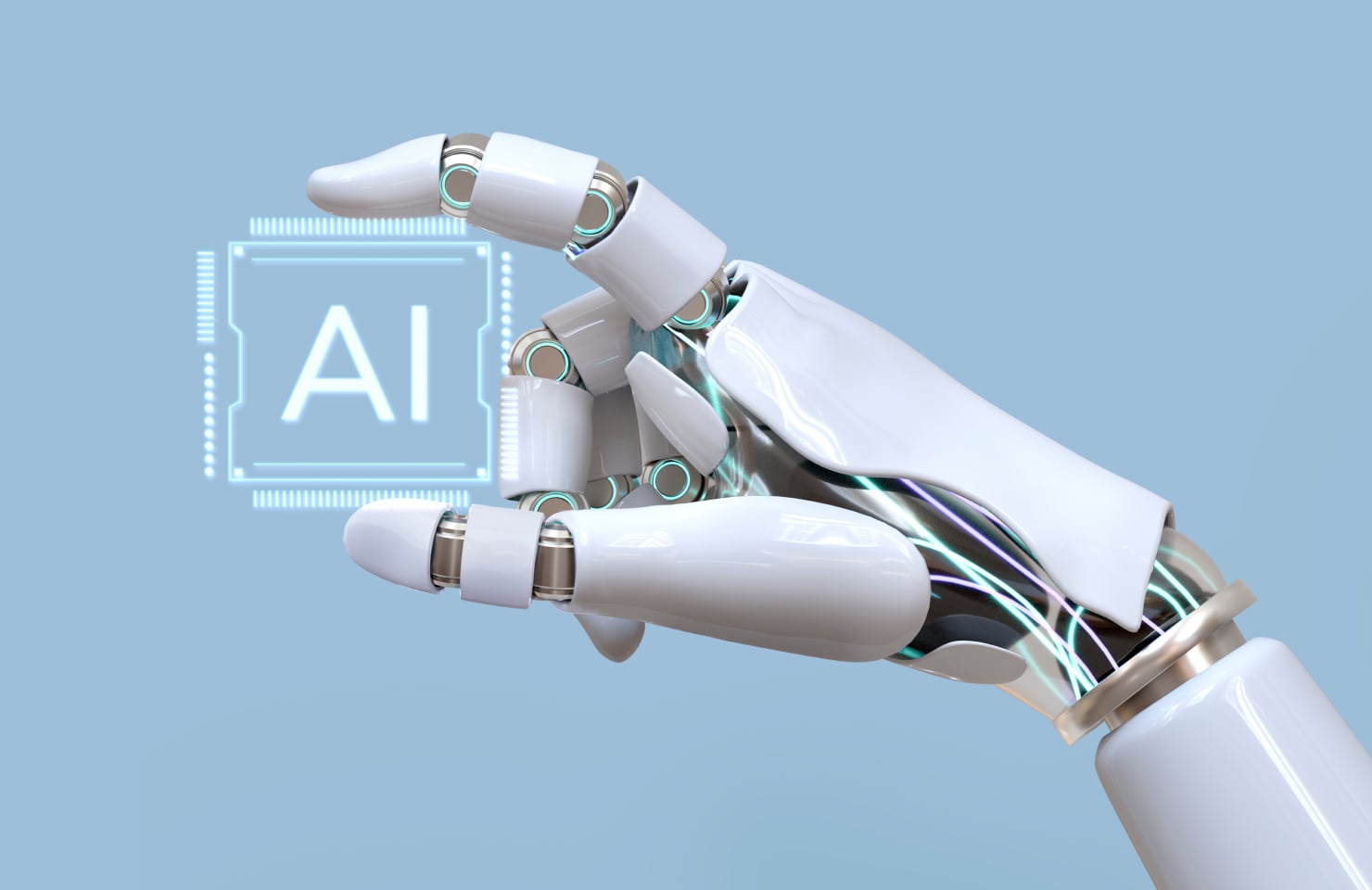
We’ve gathered the top tools below, and given a summary of what they offer and their subscription prices. It’s time to check them out and decide which tools would work best for you:
- Stable Diffusion
- Midjourney
- Luma AI’s Dream Machine
- Bing
- Leonardo.Ai
- Kling AI
- Microsoft Designer
- Krea
- Pika
- PromeAI
- OpenArt
- Hailuo AI
- Playground AI
- Civitai
- Bonus: Runway
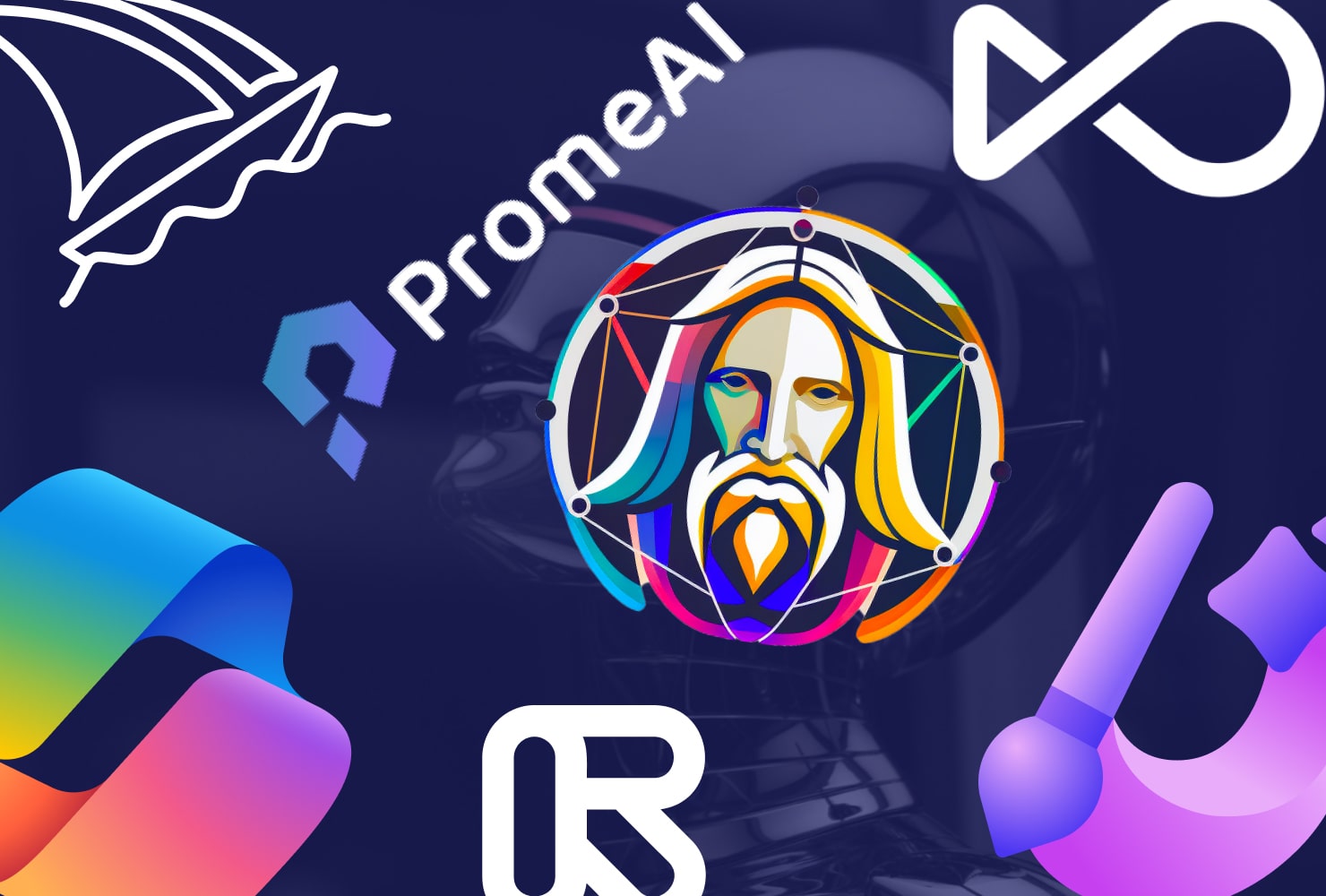
Stable Diffusion
Stable Diffusion is a text-to-image model using deep learning launched in 2022. Initially not an online service, it got its online version over time, but previously you had to install it locally on the computer. It will not come as a surprise that it has most of the possibilities. It can function on the majority of consumer hardware outfitted with a modest GPU and at least 8 GB VRAM, and its code and model weights have also been made freely available.
The issue here is that it is difficult to come by if you prefer to install the non-online version. You will need a lot of additional work to install the latest app onto your device with the help of Github using Terminal. Moreover, the problem with working on your device also arises from the need to get an additional interface for the model. Over time different third-party interfaces appeared to make the work on your device possible. Among the most popular ones are Automatic1111, Comfyui, Fooocus v2, InvokeAI. But qualitatively Stable Diffusion is a departure from earlier publicly available proprietary text-to-image models like DALL-E and Midjourney. These were previously only available via cloud services, so all this hard work is fully worth the effort.
While Stable Diffusion does not yet have a user-friendly interface like some AI picture generators, it is free for personal and commercial use on both PC and Mac and has a fairly permissive license, only prohibiting a number of drawing scenarios and use cases. When it comes to inspiration, you can get prompts from Lexica to get a better picture as a final result. The service has been so popular that the internet is full of different models and prompts to adjust to the most efficient work with the tool.
You can get the beginner’s guide to Stable Diffusion’s models as well as numerous examples for all the use cases you can imagine.
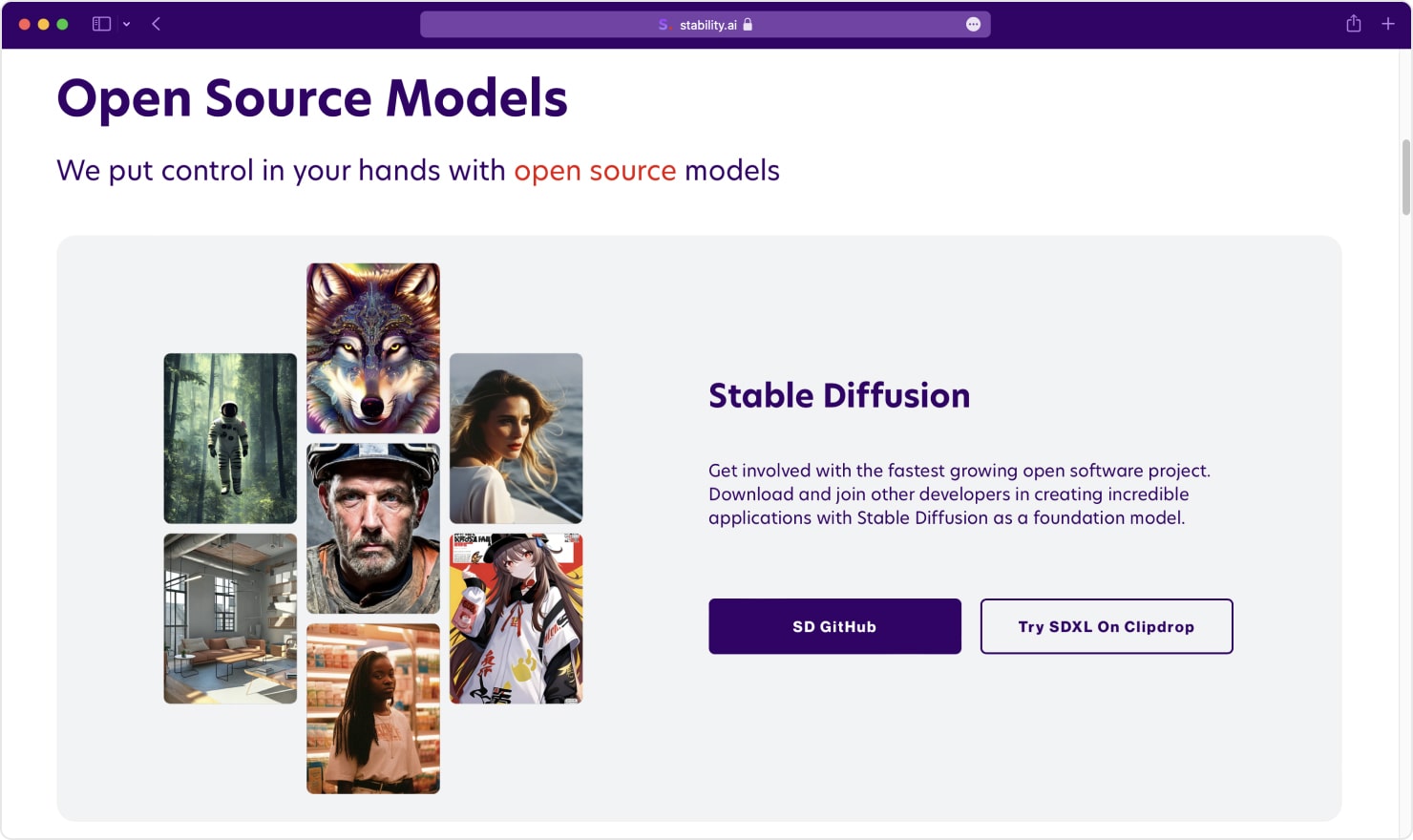
Midjourney
Midjourney is getting a lot of buzz, as this is one of the most creative AI art generators to hit the scene. Midjourney is– as they call themselves– “an independent research lab” that offers a range of amazing design capabilities, that can be generated by user prompts, that all begin with “/imagine:” From there, the tool creates designs that are only limited by your own creativity in writing a description.
Midjourney creates illustrations, photos, graphics and templates. This platform is used through the Discord app, so it may not be as beginner-friendly as other AI art platforms. Users must have a Discord profile and connect to the Midjourney server. If you’re already familiar with Discord, this tool is easy to jump into. When you run out of ideas, Midlibrary prompter will be there to help you out. Created by Midjourney and trained on their new AI supercluster, the Midjourney version 4 model features a completely redesigned codebase and AI architecture, which will leave no AI design and illustration fan unimpressed.
Midjourney no longer offers users a free trial. That being said, the basic subscription plan is 10 USD per month, or 8 USD per month if paid annually, and allows for 3.3 hours of use. For artists who need to generate images rapidly and will use the platform for more than 3 hours, there are pro and commercial subscriptions available, at 30 USD and 60 USD a month.
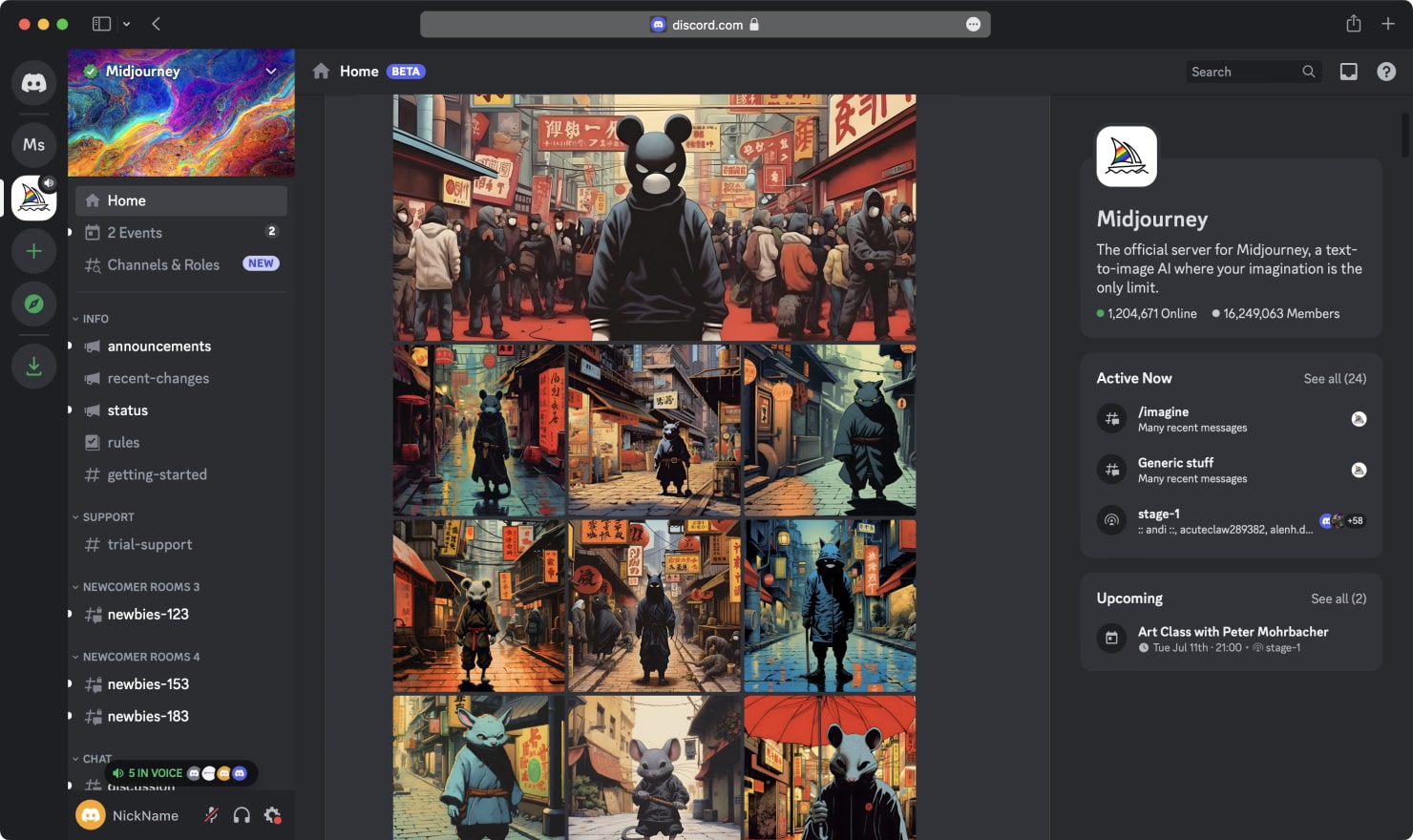
Luma AI’s Dream Machine
Luma AI’s Dream Machine is a cutting-edge platform that allows designers to ideate, visualize, and create high-quality, realistic videos using powerful image and video AI models. By simply inputting text descriptions or images, users can generate stunning visuals that align with their creative concepts. The platform’s intuitive interface eliminates the need for complex prompt engineering, enabling designers to communicate their ideas naturally and see them realized in video form. Dream Machine also offers features like video extension and loop creation, providing flexibility in crafting dynamic content.
One of the standout features of Dream Machine is its ability to incorporate visual references, allowing designers to bring in their own images, styles, and character references to achieve the desired look and feel. This capability is particularly beneficial for maintaining brand consistency or adhering to specific aesthetic guidelines. Additionally, the platform’s “Brainstorm” feature offers endless inspiration by generating creative alternatives, helping designers explore different perspectives and refine their ideas. With Dream Machine, the creative possibilities are vast, making it a valuable tool for designers seeking to push the boundaries of their visual storytelling.
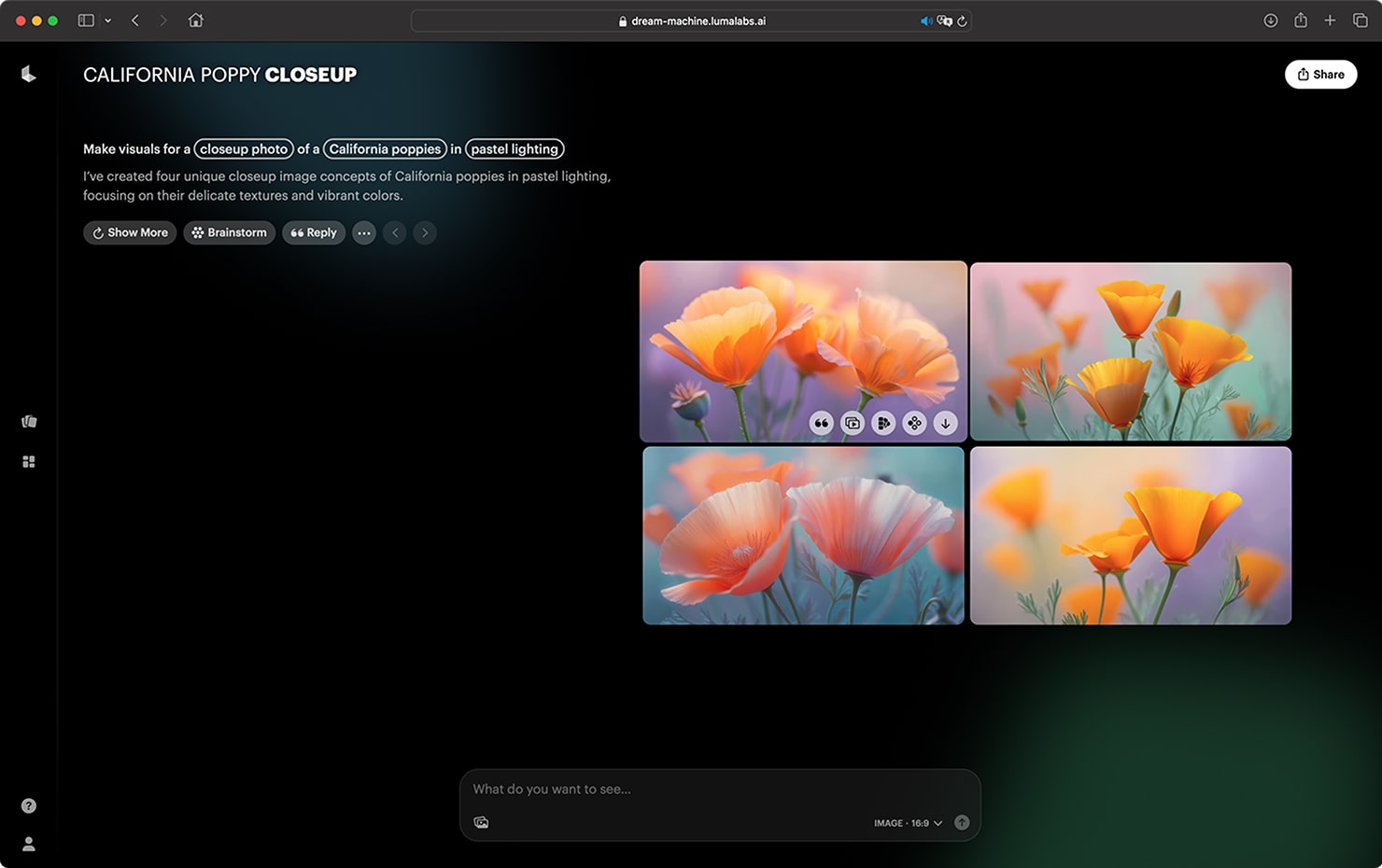
Bing
Image Creator by Microsoft Bing is a tool that enables users to create AI images using DALL-E 3 as its basis for image generation. This AI tool provides a group of images that correspond to a text prompt. To employ Image Creator, users create a new Microsoft account or sign in with an already-existing one.
For Image Creator, new users are given 15 enhanced generations. And the generated images will be kept for a maximum of ninety days. To make a series of AI-generated graphics, enter any word description you can think of. The workflow is straightforward, similar to what you may have seen in other tools like Midjourney.
The process of creating an image with Image Creator obviously differs from that of doing a Bing image search. It functions best when you use a lot of detail. Thus, use your imagination and include information such as locales, adjectives, and even artistic genres like "photorealistic" or "digital art." The great news is that there are no upfront fees or waiting lists. The creators claim that their goal is to make AI-generated images accessible to everyone.

Leonardo.Ai
A technology called Leonardo.Ai utilizes AI to produce beautiful gaming assets including objects, environments, helmets, structures, and concept art. With an artist-friendly interface, it enables users to quickly generate ideas, train their own AI models, and produce original production-ready assets.
Reminding us of Leaonardo da Vinci’s talent by its name and logo, Leonardo.Ai has a freemium pricing model and offers to sign up for an exclusive early bird access. You can choose to use an existing model or fully equip your own one. You may create hundreds of variants and deviations from your training data by quickly training your own AI model. You may iterate as much as you want to gain the perfect result of your character and environment.
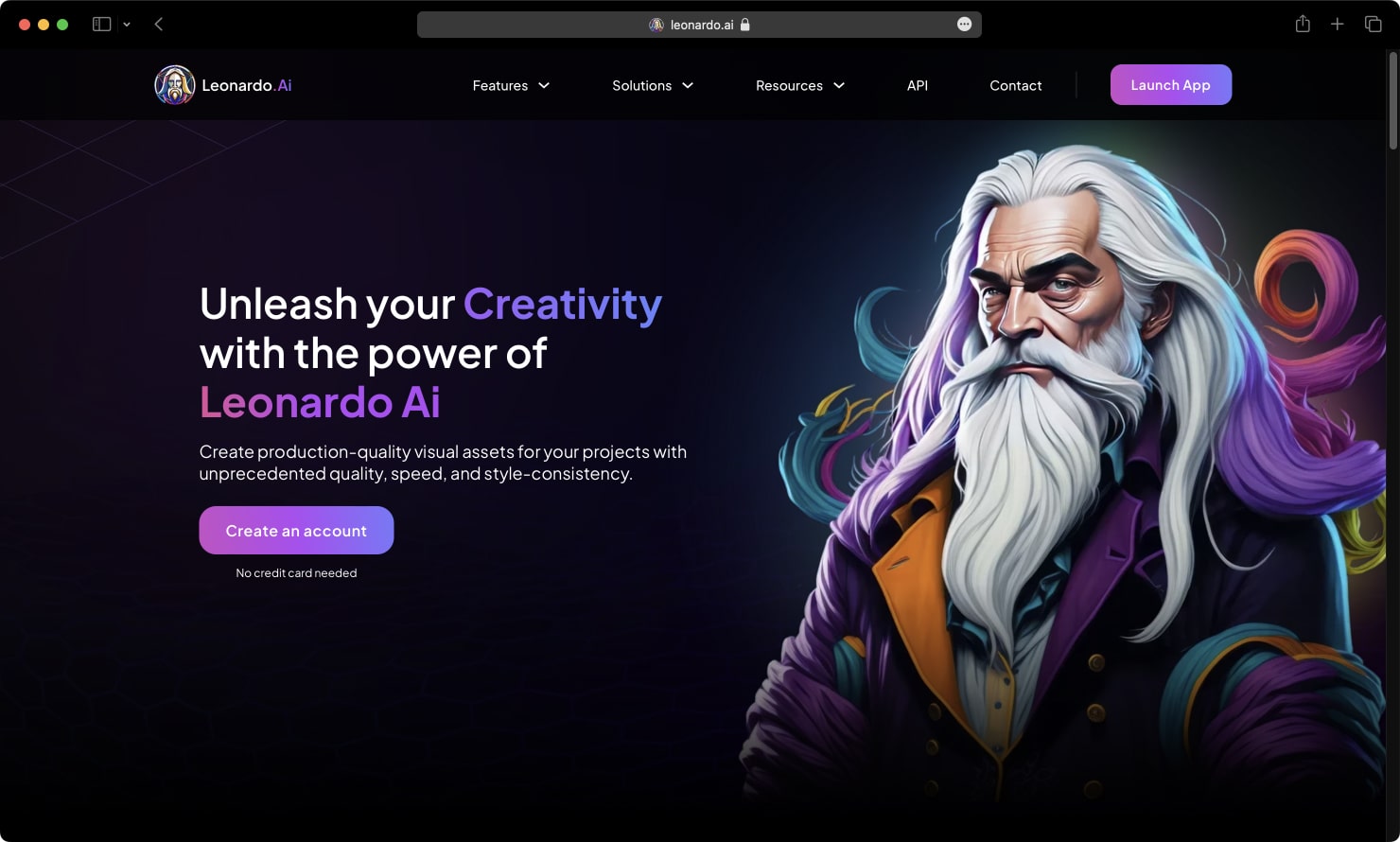
Kling AI
Kling AI is an advanced tool that specializes in generating videos from text and images, offering both image-to-video and text-to-video generation features. The platform provides users with creative control over their video outputs, allowing for the addition of both starting and ending frames to their videos. This feature is similar to those available in other high-end AI video creation tools and enhances the storytelling aspect of the videos produced.
Kling AI’s Pro plan introduces several new creative tools that give users more control over their video outputs. For instance, users can now add both a starting and an end frame to their videos, similar to the features available in other high-end AI video creation tools like Luma Labs’ Dream Machine.
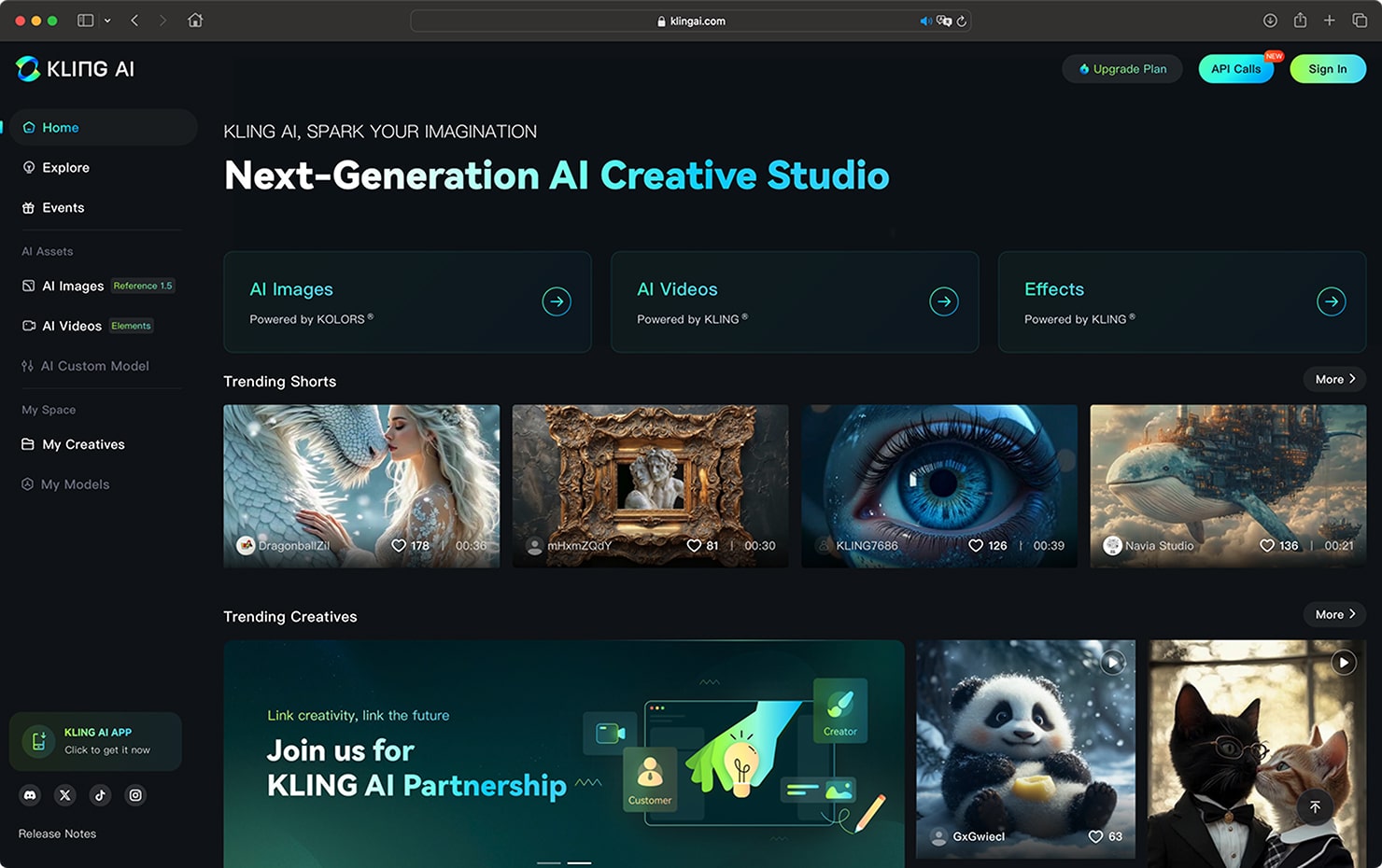
Microsoft Designer
Microsoft Designer is an AI tool powered by DALL-E 3 AI technology. Using text, you can create images in seconds, including things like social media posts, invitations, posters, advertisements, and anything else you can think of. If you’re short on creativity for prompts, this tool has customizable templates so you have an automatic starting place to kick off your new design.
Microsoft Designer is free with some limitations, or free if you have a Microsoft 365 Personal or Family plan, which starts at 69.99 USD annually.

Krea
Krea sounds a lot like the word “Create” and that is what this tool is meant to help users do in a new way with their innovative technology. It claims to offer “design at the speed of thought.” They do this by using a Latent Consistency Model (LCM), which is reported to speed up the process of generating images from text by skipping steps in the process. Another unique aspect is Krea’s ControlLoRA technology, which gives designers more control over the spatial aspects of the images they create.
In its web interface, the tool also offers an integration with apps, which allow users to create patterns, or turn a logo into an illusion. Though users need to log in to use Krea, the tool is free for now, while it is in Beta.
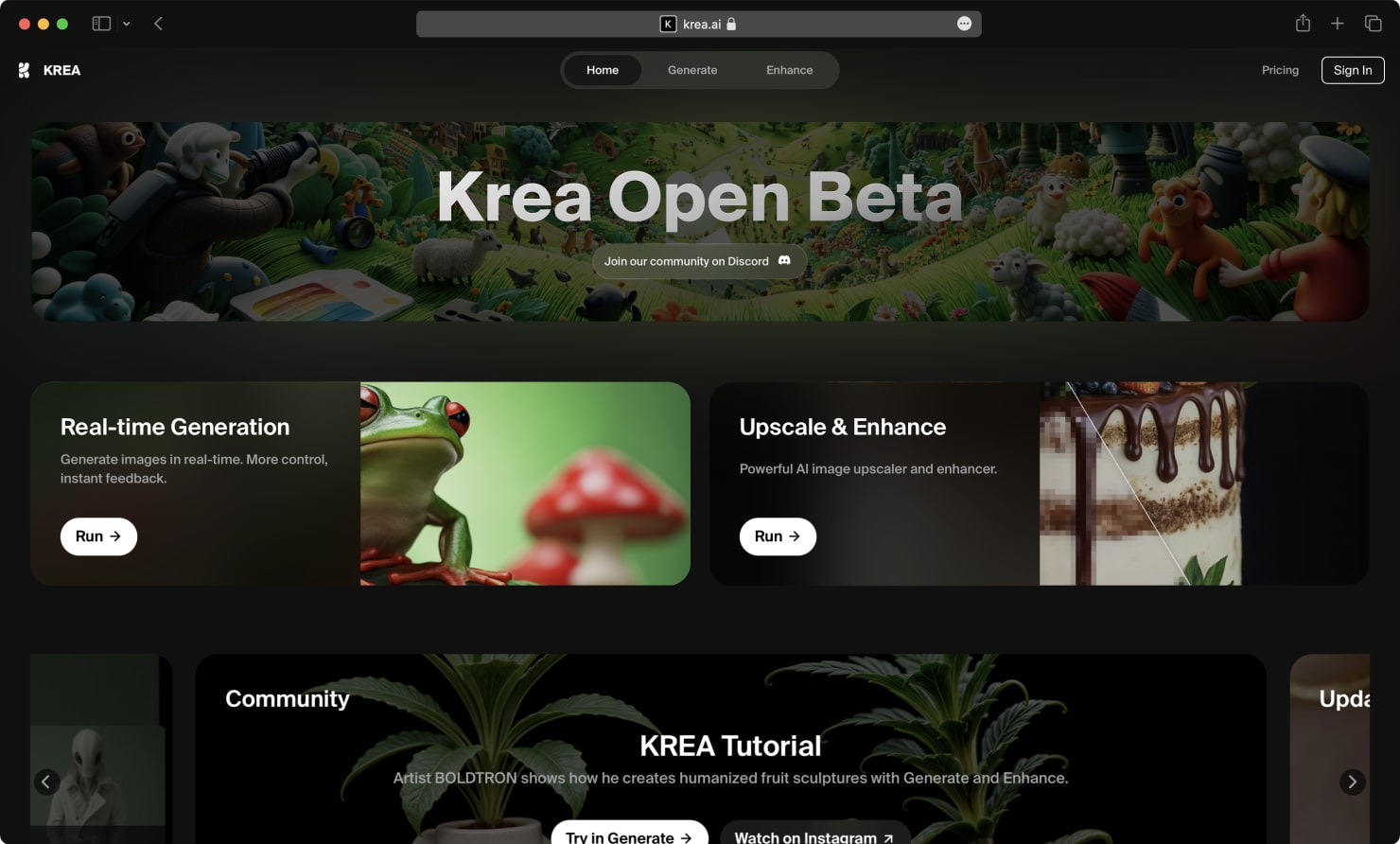
Pika
Pika is an AI-driven platform that empowers designers to create imaginative and high-quality videos with ease. The recent release of Pika 2.1 introduces a new model that enables users to bring their most creative ideas to life in stunning 1080p resolution. One of the notable features of Pika is “Pikadditions,” which allows for the integration of real footage with fantastical elements, elevating videos with surprising and creative components. This feature opens up new avenues for designers to experiment and innovate in their video projects.
The platform’s user-friendly interface and advanced AI capabilities make it accessible for designers of all skill levels. Whether you’re looking to create a whimsical animation or a compelling narrative, Pika provides the tools necessary to transform your ideas into captivating visual stories. The ability to combine real footage with creative additions offers a unique blend of reality and imagination, making Pika a valuable asset for designers aiming to produce engaging and original content.

PromeAI
PromeAI takes sketches or drawings and creates realistic photos from them. It is particularly helpful to transform architectural sketches into a realistic rendering. Users can also generate completely new images from reference images, with similar styles, layouts and aesthetics. Users can also create mockups, taking objects and placing them on models or in customized settings. PromeAI offers a headshot generator that users can work with using one of their own photos.
The tool has a free version, but for the paid subscriptions, you can download higher resolution images, generate videos, and enjoy faster processing times. Subscription levels range from 29 to 79 USD monthly.
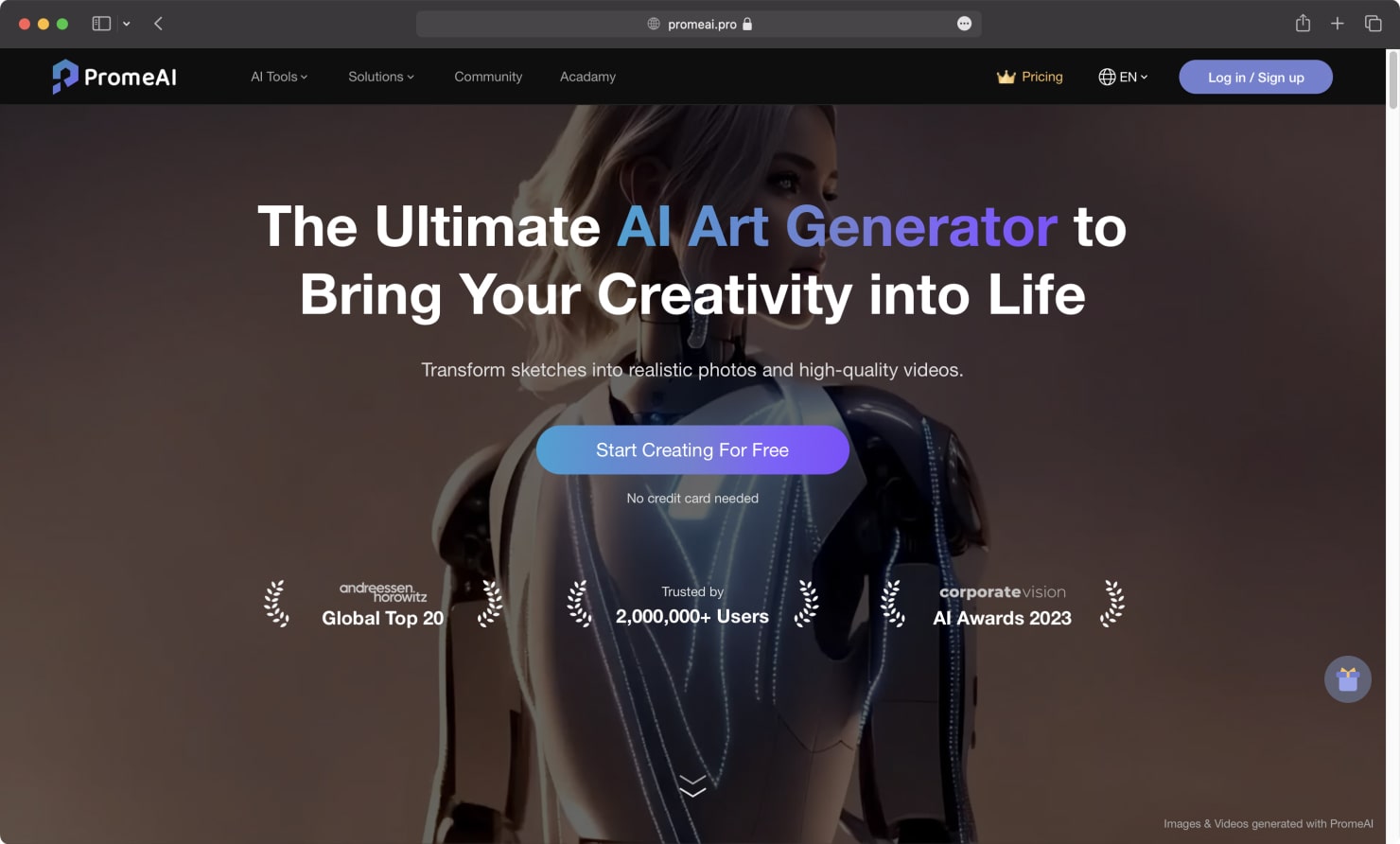
OpenArt
Openart.ai is a tool for users to create images from text, expand existing images, animate a video or transform an image to a prompt. The tool is simple to use, with a clean uncluttered interface and options that make it easy to start creating. OpenArt makes powerful AI capabilities easy to use, even for a beginner.
OpenArt offers an interesting feature: Flow Apps. These are apps that integrate custom options with drawings or images uploaded by users. There are choices like Sticker creator, Face Swap, Science Fiction illustrator. These are a “shortcut” to getting images in a specific style without having to work at creating a detailed prompt. Community members can create an app for the site, as well.
OpenArt is free for 1,000 images, then a subscription ranges from 9.99 USD/month for a basic plan to 49.99 USD/month for a professional plan.
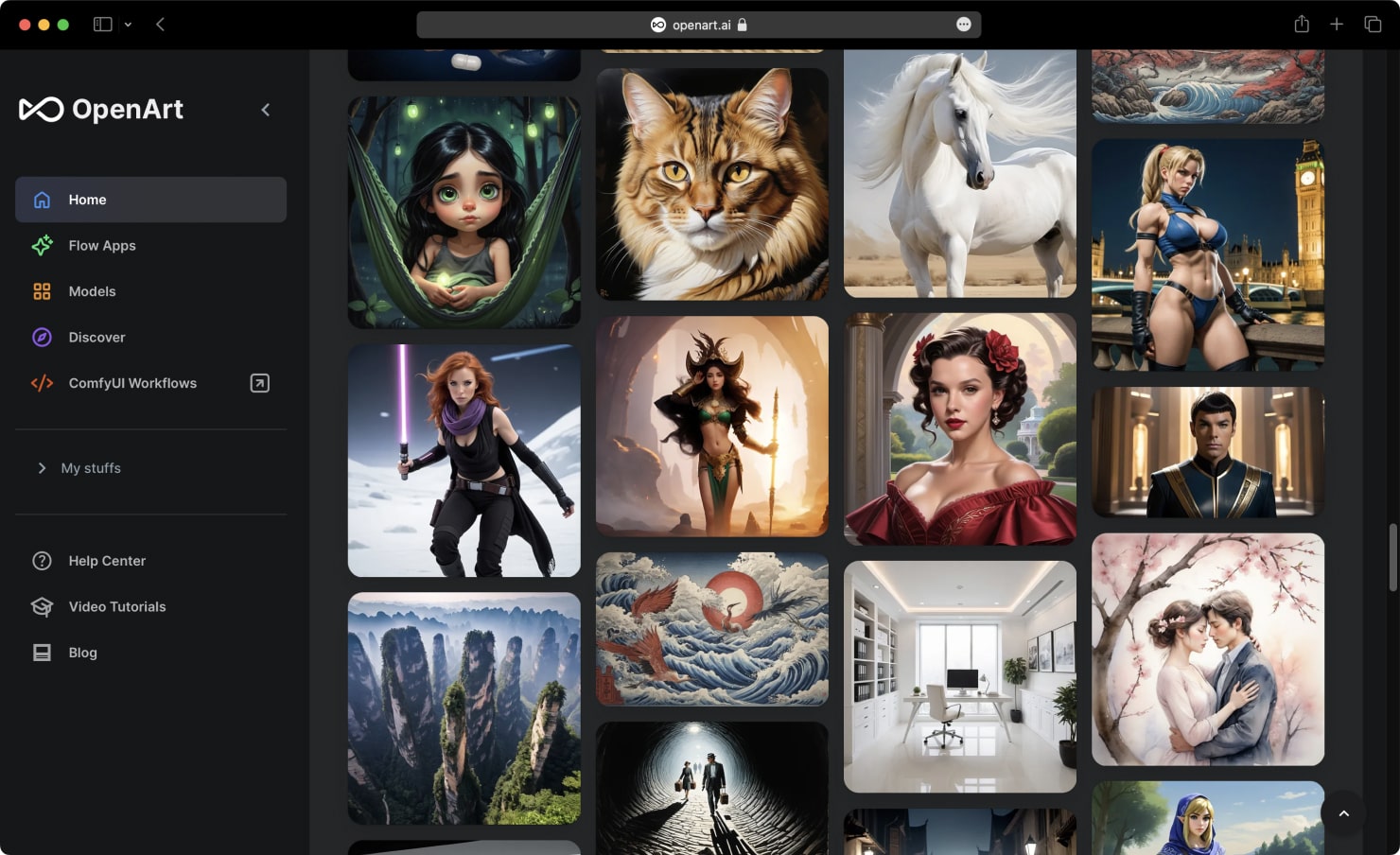
Hailuo AI
Hailuo AI is designed to transform ideas into visual content through the power of artificial intelligence. The platform offers a feature called “Quick Create,” which streamlines the video creation process, allowing designers to swiftly bring their concepts to life. By inputting prompts or images, users can generate videos that align with their creative vision, making it an efficient tool for rapid prototyping and content development.
Hailuo AI also provides a gallery of user-generated content, offering inspiration and showcasing the diverse possibilities achievable with the platform. This community-driven aspect allows designers to explore different styles and techniques, fostering creativity and innovation. Whether you’re looking to create a simple animation or a complex visual narrative, Hailuo AI’s intuitive tools and features make it a valuable addition to any designer’s toolkit.
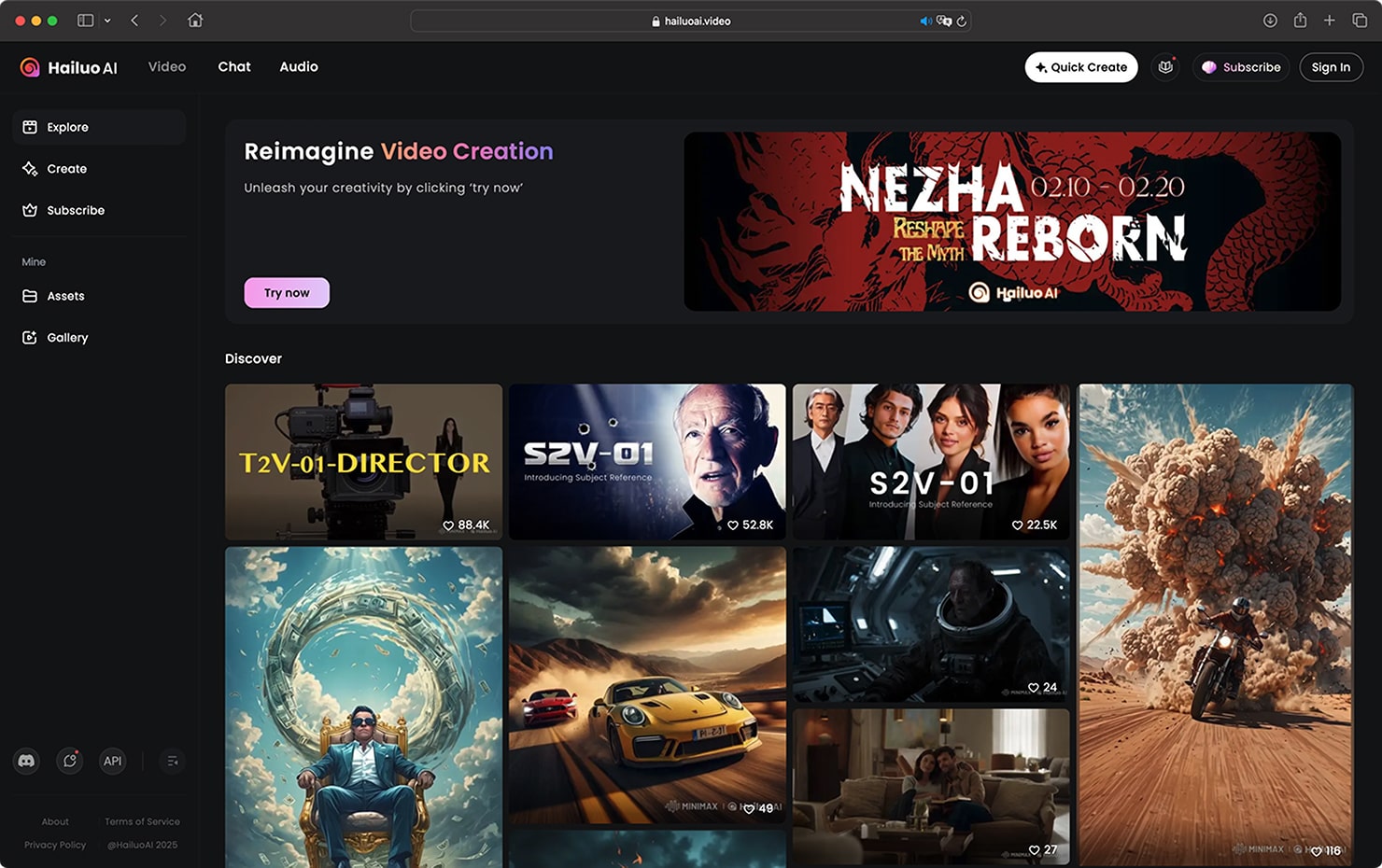
Playground AI
Playground AI lets users blend real and synthetic images to come up with your own unique work of art. In addition it offers a text to image creator, similar to most AI art tools. The interface is straightforward, and users can start with image generation right away, after signing up for a free account. It offers many options for customization of art, and playing around with the results you create
Although the model it uses, Stable Diffusion is not quite as advanced as what Midjourney can offer. However, users can pay for DALL-E 3 image generation for a more highly refined result.
This tool has a generous free user level, allowing up to 500 images a day with limitations, and there are subscription plans at 12 USD or 36 USD a month, depending on the capabilities you need.
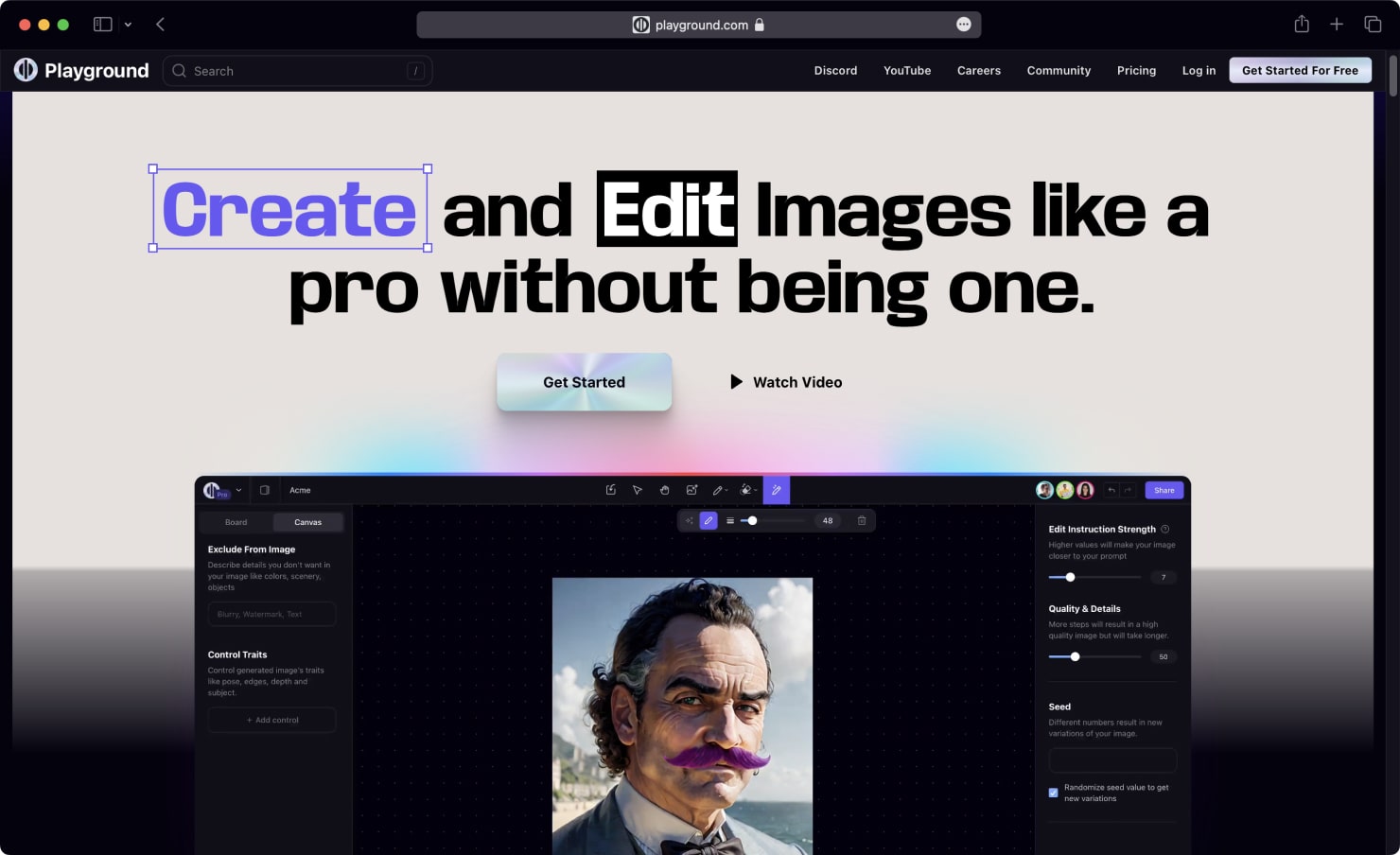
Civitai
Civitai positions itself as a community centered around AI Art, meant to encourage collaboration. Users can share, discover, and browse art models to create their own. You can also edit your existing images.
The platform encourages active participation through uploading your art, sharing feedback and communicating with members through a Discord channel. The team also takes suggestions for new features from users who are involved in the platform.
Civitai claims its goal is to democratize AI media creation, and blend that with community engagement. It’s free to use, with options for supporters and donors to get additional perks, like access to early features and unique badges.

Bonus: Runway
Runway allows for multiple types of media creation and editing, from typical text-to-video generation to making visual textures from prompts. It also offers video editing tools and an asset management system—all within a cloud-based service. The company’s aim is to “build multimodal AI systems to enable new types of creative tools.”
The standout feature of Runway is the text-to-video generator, which isn’t offered by many other AI tools yet. It’s easy to use, and doesn’t require a lot of background knowledge. You can simply take any image, video or text and turn it into film.
Runway is free to use for its basic features, and beyond that, subscriptions are 12 USD or 28 USD monthly. To start using the text to video generation, the cost is 76 USD/ month.
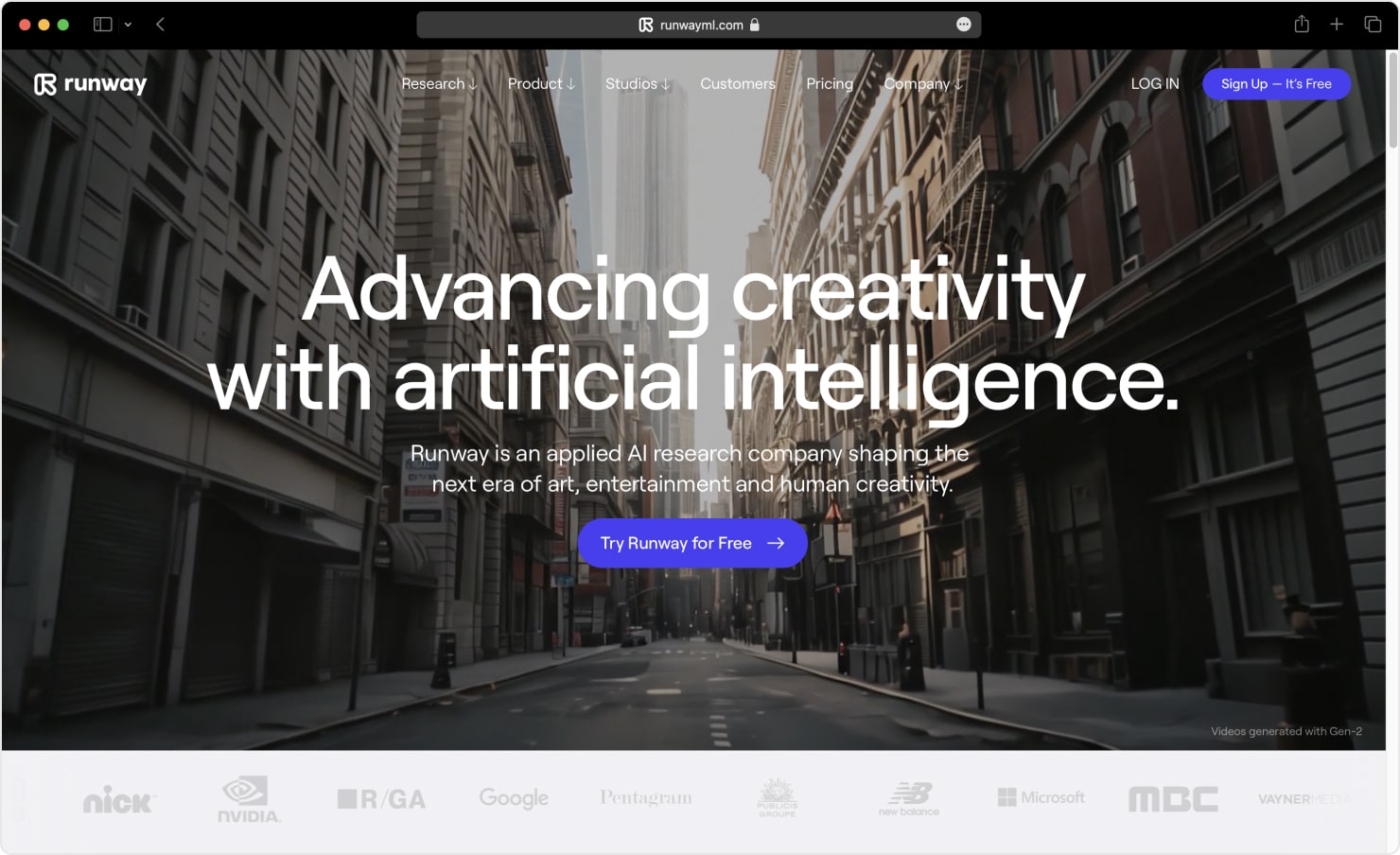
Conclusion
Artists are spoiled for choice when it comes to AI tools that allow users to manipulate images, edit film, render drawings or perfect photos. But beyond artists and designers, everyone benefits from an explosion of artificial intelligence tools that have come on the scene recently that are simple and straightforward to use. People who have never used a paintbrush can create works of art worthy of a frame, in the style of their favorite artist. Unique art is generated by typing text, or by copying the prompt of another image you’d like to emulate. Anyone can dream up a scene or a story, and turn it into visually stunning images or videos—and often for free.
AI tools are providing a wealth of resources and more possibilities than most people could use in their lifetime. There are loads of free AI tools, but plenty of paid subscription levels too, if you’re going to create thousands of images daily, or use these tools in your business. With the expansive capabilities offered by simply dreaming up an idea and typing it into a search bar, the only difficult choice may be deciding which AI art tool is your favorite.